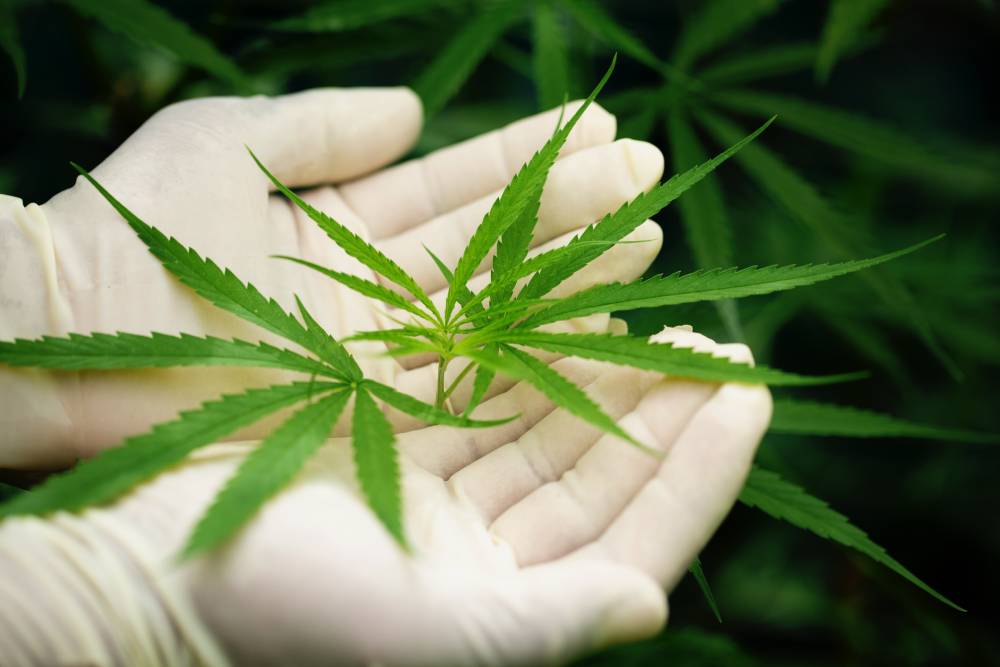The majority of people use cannabis either for medical or recreational purposes, but over an extended period, some of them wonder, “Why am I not getting high anymore?” This is something that happens pretty frequently and is often put down to tolerance.
Over time, the body of the user can get accustomed to THC, the active component, due to regular cannabis consumption. This reduces effects, meaning the user has to consume more potent strains to achieve the same high. The tolerance depends on Individual body chemistry of the user, the total number of cannabis consumed, and the rate of consumption, among other things. Taking a break from cannabis helps reset it and restores all of the previously available effects. Having a good understanding of THC tolerance will help in more effective management of consumption while maintaining the desired effect.
Understanding Cannabis Tolerance
Tolerance to cannabis means your body gets used to it. If you use it a lot, you might need to consume more to feel the same way you did before. Using cannabis frequently leads to adjustments both in the brain and body. Gradually, the same quantity of cannabis will fail to elicit the same effects.
This is crucial for individuals who hold a medical marijuana card. Using cannabis every day for pain or worry can make it less effective over time. This means you might not feel better anymore.
THC is what makes people feel high when they use cannabis. The feeling of THC will only be experienced when it is connected to specific receptors in the brain. Overuse of cannabis or marijuana will lead to those receptors not responding in the previously accustomed way.
Signs That You Have Built a Tolerance
If your body has built a tolerance to cannabis, here are some indicators:
- The effects you used to feel are now diminished and require an increased amount to achieve the desired effect.
- Your heart also fades away from the gut—it’s shortened in duration.
- Euphoria, calm, relief, or any sensations feel dulled.
- As the dulling of the effects occurs, you smoke or consume cannabis more frequently.
These signs are apparent even to medical cannabis patients. Your cannabis prescription is still valid; it just needs a break.
Why Does Tolerance Happen?
Like almost everything, your body also has an Endocannabinoid system, which helps modulate sleep, appetite, mood, and pain. As the name suggests, cannabis interacts with the Endocannabinoid system.
As cannabis is consumed more and more frequently, the brain has to maintain homeostasis. In the case of THC, the brain tries to maintain balance by changing how it responds to the drug, which is referred to as receptor downregulation. The CB1 receptors will become less responsive to THC.
This would result in a milder high, which is felt drastically more over time. This explains the idea of tolerance. Simply put, the more cannabis is used, the more the brain adjusts to this change. This is all part of nature’s processes.
What Affects How Fast You Build Tolerance?
Everyone reacts to cannabis differently and builds tolerance at their own pace. Some people feel the effects quickly, while others need more time. Keep these essential points in mind:
Genetics: Vulnerability to THC differs for everyone.
Metabolism: A speedy metabolism could impact how long THC is retained.
Age and Gender: Younger users might have an easier time building tolerance. Hormones can also impact sensitivity.
Method of Use: Smoking flower is likely the least practical approach when compared to edibles, dabbing, or high-potency oils, which may result in quicker tolerance escalation.
Amount and Frequency: Heavy or daily usage results in rapid bodily adjustment.
With a medical card, daily smoking could mean swift adaptation by the body. It’s all about listening to your body and making alterations as needed.
What Can You Do About Cannabis Tolerance?
If cannabidiol doesn’t affect you the same way, there are solutions. Here are steps you can take to lower your tolerance and enjoy cannabis again:
1. Take a Tolerance Break (T-Break)
The best way to lower your tolerance is to stop using cannabis for a few days or weeks. This gives your body time to reset.
- A short 3- to 7-day break helps many people.
- A longer break (2 to 4 weeks) may be better for heavy users.
- You might feel withdrawal symptoms like irritability or trouble sleeping. These are normal and temporary.
A tolerance break can restore your sensitivity to THC. When you return, you may need less to feel high.
2. Use Less Potent Products
Try products with lower THC levels. You can also use strains with more CBD. CBD does not cause a high, but it helps balance the effects of THC.
- Use flowers instead of concentrates.
- Choose balanced strains like 1:1 CBD:THC.
- Avoid dabs or potent oils during your reset.
3. Reduce Frequency and Dose
Try using cannabis less often. Instead of daily use, try every other day or only a few times per week. This gives your body time to adjust.
- Start with a smaller dose.
- Use only when needed, especially if you have a medical marijuana card.
- Track your use and how you feel.
4. Try New Methods
Switching how you use cannabis can also help:
- Edibles take longer to work but may give a different high.
- Tinctures or oils can be used in smaller, controlled doses.
- Vaping flower may feel different than smoking.
Ask your cannabis doctor for advice on new products or methods. They can help you find what works best.
Mindset and Setting Also Matter
Sometimes the issue is not just tolerance. Your mood, mindset, and surroundings can change how cannabis affects you.
- If you feel anxious or stressed, it may block the high.
- Using cannabis in a new or calm place may improve your experience.
- Being around friends or loved ones can enhance the effect.
If you expect not to feel high, your mind might follow that expectation. A positive mindset helps a lot.
What If You Use Cannabis for Medical Reasons?
If you have a medical marijuana card, tolerance can still happen. But you don’t always need to take a long break. Instead, try the following:
- Talk to your cannabis doctor. They can help adjust your dose.
- Use strains that focus on CBD or other cannabinoids.
- Switch between different products every few weeks.
- Use cannabis only when symptoms are intense.
Medical cannabis should still provide relief, even if the high is weaker. Focus on how your body feels, not just the mental high.
When Should You Get Help?
Cannabis is generally safe for most folks. But sometimes, it can turn into an issue. It’s a good idea to reach out for help if:
- You can’t stop using cannabis, even if you want to.
- You feel anxious, sad, or unmotivated.
- You use cannabis to avoid life problems.
- You use it all day, every day, and feel nothing.
There are resources available. Talk to your cannabis doctor. You can also speak to a therapist who understands cannabis use. Support groups are also a good option.
Final Thoughts: Understanding and Managing Tolerance
Tolerance is a normal part of regular cannabis use. It doesn’t mean weed has stopped working. It just means your body has adjusted.
With a bit of change, you can enjoy the benefits again. Take a break. Lower your dose. Try a new method. And talk to your cannabis doctor if you have a medical marijuana card.
Cannabis is a helpful tool. But like all tools, it works best when used wisely. Know your body. Respect your limits. And always use cannabis responsibly.
FAQs
Can Marijuana Detox Help Lower My THC Tolerance?
Yes, a marijuana detox or tolerance break can help reset your body's response to THC. Taking a break from cannabis use allows your CB1 receptors in the brain to recover, making you more sensitive to THC again. A detox is a great way to feel the effects of cannabis more strongly without needing higher doses.
How Does Medical Marijuana Help with UC Symptoms?
Medical marijuana for UC symptoms (ulcerative colitis) may help reduce inflammation, ease abdominal pain, and improve appetite. For patients who have built up a tolerance, managing your cannabis use carefully can help maintain its effectiveness in relieving UC symptoms.
Is It Safe for Parents to Use Medical Marijuana?
Medical marijuana for parents can be safe when used responsibly and legally. Parents should manage their dosage, avoid overuse to prevent high tolerance, and consider non-psychoactive options like CBD. Always consult with a doctor, especially when using cannabis around children or in a caregiving role.
Can Medical Cannabis Help with Diabetes Management?
Medical cannabis for diabetes may assist with symptoms like nerve pain, inflammation, and sleep issues. However, regular use may lead to tolerance, reducing its benefits. Patients should monitor their dosage and consider alternating strains or taking short breaks to maintain effectiveness.
What’s the Best Marijuana Strain for Pain Without Building Tolerance?
The best marijuana strain for pain often includes a balanced mix of THC and CBD. Strains like Harlequin, ACDC, or Cannatonic provide relief without overwhelming psychoactive effects. To avoid tolerance, rotate strains, use low doses, and consider products with more CBD.





